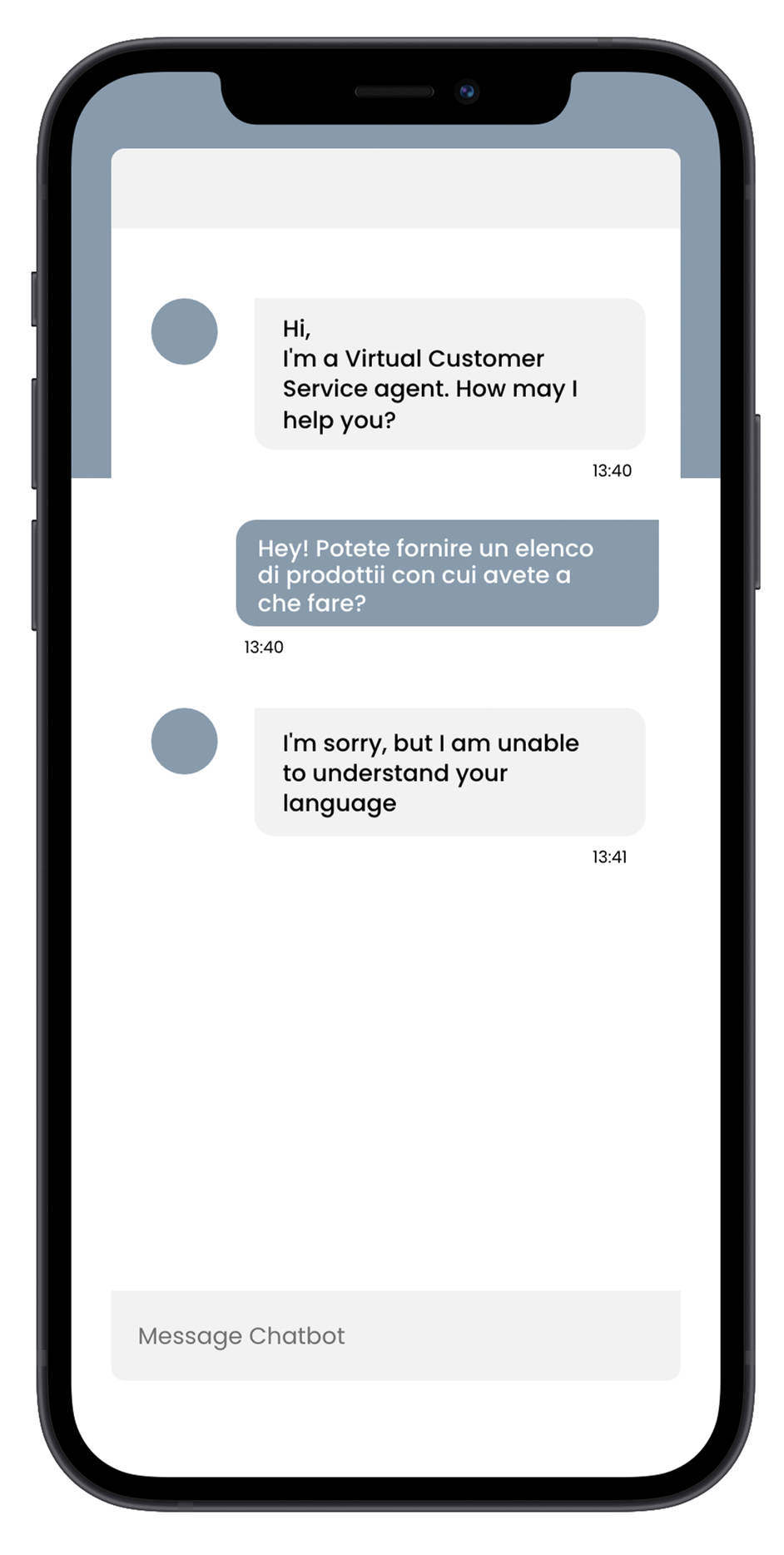Much of the buyer process involves research and problem-solving prior to purchase; finding out product specifications, warranties and shipping information. In this article, we explore the impact that deploying a multilingual chatbot can have on CX and your business as a whole.
What Is A Multilingual Chatbot?
In customer service, a chatbot serves as a form of self-service, allowing your customers to get answers to their questions online, without having to involve an agent.
Customer service chatbots utilise AI to automate routine queries that would otherwise reach contact centres where agents deal with them. This is hugely beneficial to businesses that experience significant reductions in support and handling costs. Routine query automation also gives agents the bandwidth required to deal with customers who have complex issues.
For customers, a chatbot offers proactive help, answering questions and often guiding them through their online journey – a digital concierge. AI facilitates not only the automation of routine questions but the automation of tasks and processes such as payments or bookings. By satisfying customer requirements solely online, CX is enhanced and this reflects positively in CSAT ratings.
But what happens when a business wants to cater to the needs of customers who do not speak their chatbot’s default language?
Implementing a customer service chatbot that has multilingual capabilities into your CX mix can be the difference between revenue and abandonment. But how does it work?
How Do Multilingual Chatbots Work?
Any self-service channel, whether that is a customer service chatbot or FAQ widget is connected to a single source of knowledge: a knowledge base.
A knowledge base is essentially an organised library of knowledge: information, resolutions, tutorials, instructions etc. Within this library, there are individual views. These views contain specific sets of knowledge that are targeted at a certain audience.
In this case, each view would serve an individual language. Your knowledge base would have a standard public view (in English for instance), then a French public view, a Spanish public view, a German public view and so on.
When engaging with the multilingual chatbot, the website visitor would simply select their chosen language from languages options which would make that particular knowledge base view available to access knowledge from.
Non-Multilingual Chatbot

Multilingual Synthetix Chatbot
Multilingual Chatbots: The Benefits To CX
There are a number of ways in which having a multilingual chatbot can help businesses not just operationally and commercially, but ethically also by:
- Increasing geographical reach
- Providing enhanced CX and boost CSAT
- Generating more leads
- Fulfilling language requirements
- Assisting vulnerable populations
Increasing Geographical Reach
By offering multilingual capabilities via your self-service channels you can essentially cast a wider net – reaching a larger number of audiences and building a greater customer base.
This is an opportunity to target those who are interested in your product/service but might have considered your company before deploying self-service channels that speak their language.
Providing Enhanced CX And Boost CSAT
When a visitor is unable to achieve what they wanted on your site, this is disruptive to their overall experience, which in turn can form poor brand associations.
However, when all it takes is a click of a button to change a chatbot’s language to a visitor’s preference, they can successfully carry out what they intended, improving CX and affecting CSAT ratings in a positive light.
Generating More Leads
Often prospects will require information regarding the product/service, shipping, warranty and so on before committing to a purchase.
However, when a company’s FAQs are written in a language they do not understand, it can isolate and discourage them from buying. Whereas, if the answers to the prospects’ questions are readily available in their preferred language, conversions are significantly more likely to take place.
Fulfilling Language Requirements
Some companies reside in geographical areas that do not have a dominant language, instead perhaps two or three. For such businesses, it is important to offer inclusivity to those that might be interested in using their products/services.
Assisting Vulnerable Populations
If your company involves giving vulnerable or under-privileged populations access to services, for instance, immigrants or refugees, it is paramount that you can offer help in a variety of languages.
As long as your knowledge base is loaded with a view written in a language they can understand, all the website visitors have to do is select that language and instantly they have access to advice, documentation and information that can help.
Considerations For Choosing A Multilingual Chatbot
When it comes to choosing a multilingual chatbot vendor, it is important to consider the following to ensure that you receive a product that is suited to your business needs:
- Is it fuelled by an AI-powered knowledge base?
- Considering a vendor that includes a knowledge base that is powered by AI and harnessed Natural Language Processing (NLP). Regardless of the language, NLP helps identify the most relevant resolution regardless of how the query is typed.
- Does the knowledge base offer multiple views?
- Without multiple knowledge base views, your customer service chatbot will not be able to offer visitors the option to switch languages, resulting in poor CX and potential abandonment.
- Is it easy to integrate with other apps?
- Consider a vendor that offers open RESTful APIs, that allows the seamless integration between your multilingual chatbot and other key business tools such as your CRM or ID&V software.
- Does it escalate to agent-assisted channels?
- There will always be instances when a customer has a query that is too complex for AI to handle alone and will therefore require some human intervention. This is where smooth escalation between your self-service channels and agent-assisted channels such as live chat is paramount to CX.
If you enjoyed this article and would like to find out more about multilingual chatbots, you can read our Chatbot Guide, or if you’d any help selecting a chatbot, please


